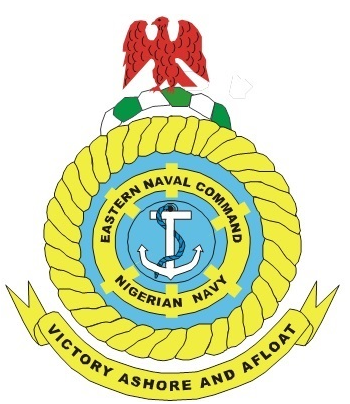- The evolution of the Nigerian Navy (NN) in terms of platforms, manpower, organization and capabilities in its almost 60 years of existence gives a fair idea of the transformational milestones that has taken place in the Service. To this extent, transformation is not a new concept per se in the
NN. However, promulgation of the Nigerian Navy Transformation Plan (NNTP) 2011-2020 in Dec 11 brought all aspects of NN strategic development aspirations into a single document, with all stakeholders aware of their roles. The NNTP 2011-2020 was revised in Aug 14 and re-named ‘Revised Nigerian Navy Transformation Plan(R-NNTP) 2011-2020’, to achieve and sustain effective NN capacity to carry out her statutory roles. The R-NNTP 2011-2020 defines appropriate strategic objectives, milestones and requisite activities along identified Lines of Development (LODs), which are the pillars of the NNTP. These are Concept and Organization, Fleet Renewal, Infrastructure and Logistics. Others are Human Resources Management (HRM) and Administration, Training and Doctrine, ICT as well as Inter-Agency and Sub-Regional Cooperation. For easy categorization of completion time frame on each Developmental Objective (DO), the plan is driven on Short, Medium and Long Terms time-frames for completion of individual activities. Short Term activities are activities that could be completed within one year of initiation of such activity/project; Medium Term activities are those that could be initiated and completed within 3-5 years, while Long Term activities are activities that could be initiated and completed within 6-10 years. - To drive this process, the Nigerian Navy Transformation Office (NNTO) was established in Dec 10 and tasked to develop and coordinate all aspects of NN transformation activities. After 4 years of implementing the NNTP and cognizant of changes in the strategic environment, the NN considered it incumbent to strengthen the structures for the attainment of NN transformation objectives. Accordingly, the NNTO was upgraded to a branch and renamed Nigerian Navy Transformation Branch (NNTB) in Mar 15. At Naval Headquarters, the NNTB is structured into 4 directorates, namely; Directorate of Transformation, Directorate of Innovation and Concepts Development, Directorate of Monitoring, Evaluation and Analysis, and Directorate of Special Projects. The Chief of Navy Transformation (CN TRANS) is responsible to the CNS for all transformation activities in the NN. Command Transformation Officers drive the transformation process at the commands and enhance effective liaison with the NNTB.
RESPONSIBILITIES OF NNTB
- The responsibilities of NNTB are as follows:
- Formulation of strategies for guiding the translation of the transformation pillars into concrete competencies in terms of organizational and personnel efficiency and credible force structure to drive the NN transformation process.
- Development of transformation strategy for the NN and its re-appraisal from time to time.
- Management of the NN transformation plans and processes at all levels of command.
- Conceptualization and development of the CNS Vision.
- Encouraging rapid innovation in response to emerging challenges.
- Conduct of demonstrations or pilot schemes on innovations.
- Advising and updating the CNS on the transformation of the NN.
- Provision of guidance in conjunction with NHQ, NASS, and NDAC on the development and investigation of future operational concepts, technologies and strategies.
- Collaboration with DHQ, the Services and other relevant agencies on transformation matters.
CNS STRATEGIC DIRECTIVE 2015-1
- In actualising the CNS Vision and Mission statements, key priority areas in the R-NNTP 2011-2020 were identified for implementation to positively impact NN operational efficiency and personnel morale. The priority areas and specific objectives were articulated in CNS Strategic Directive 2015-1 of 31 Aug 15. The NNTB was tasked to generate Key Performance Indicators (KPIs) and Assessment Mechanism to monitor implementation of CNS Strategic Directive 2015-1 by branches, commands, ships, units and establishments. Accordingly, the Branch has developed a template Score Card for measuring the performance of NHQ Branches, commands and autonomous units in executing the assigned tasks in line with the CNS Strategic
Directive 2015-1.
CONCLUSION
- Transformation is not just a one-time reform, nor is it just only about restoring certain values, but a process that involves fundamental restructuring, radical and profound changes which will be a complete departure from ‘business as usual’. Transformation is also about internal fundamental change and innovation and this is the context in which the NN transformation process should be understood. The foundation for attaining NN transformation objectives is effective communication of NN Core Values, CNS Vision, Mission and strategic goals. Consequently, the NNTB shall continue to conduct awareness and sensitization lectures, seminars and workshops across NN commands and establishments on a continuous basis to ensure that the personnel understand their roles in the process. This is borne out of the fact that transformation involves managing a change process and not a one-off event.
- Furthermore, bearing in mind that transformation in itself is only a process towards enhancing the NN operational effectiveness, the NNTB will continue to flag issues such as business transformation priorities, outsourcing basic support services and logistics and encouraging innovation that would substantially lead to reduction in wastages from NN administrative and operational processes. NN transformation initiatives shall also continue to align with the national vision such that the NN will be among the top 20 navies in the world by 2020. It is attainable, it is achievable, but only if we continually remind ourselves individually ‘Let us do what we have to do’.

